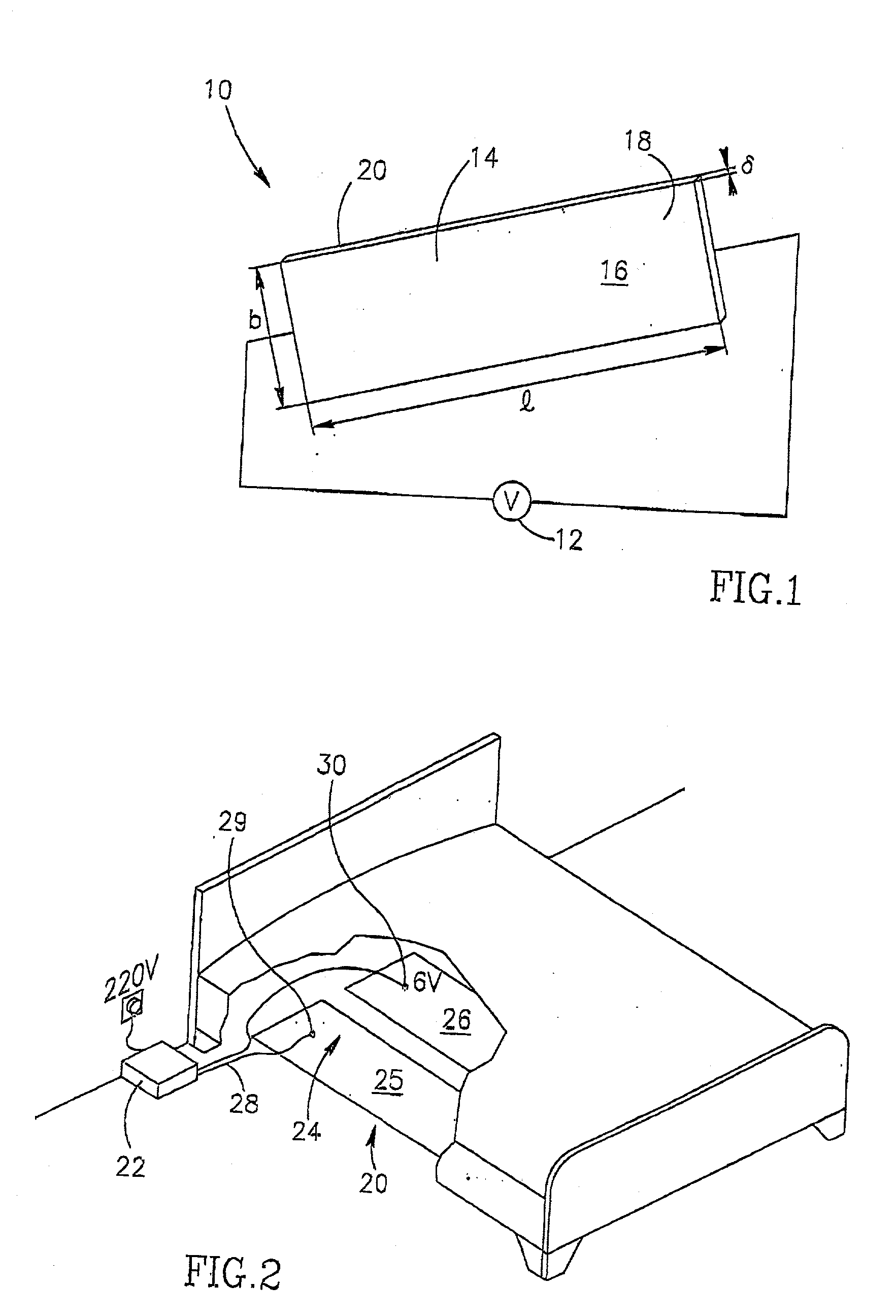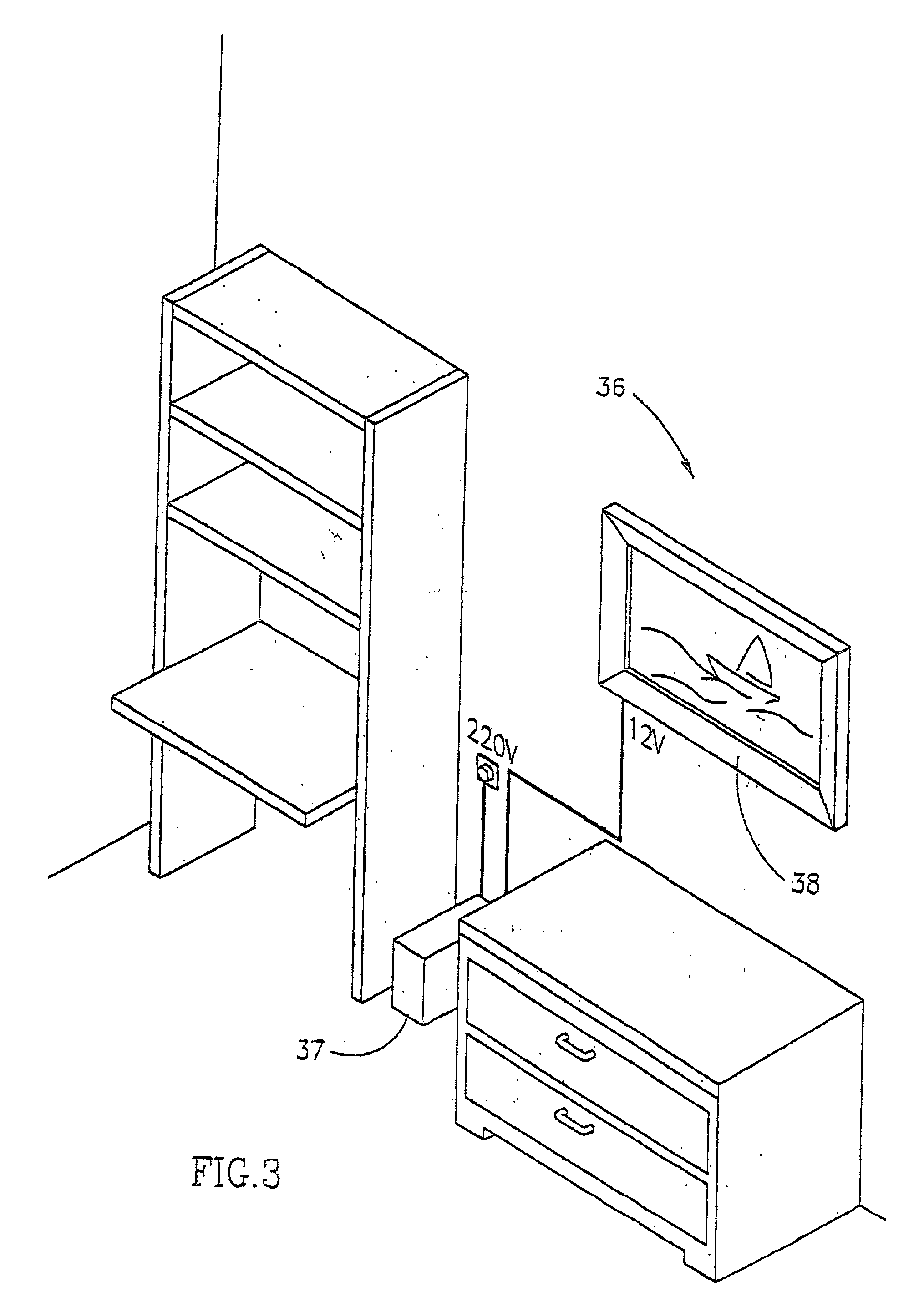Electric heating devices and elements
a technology applied in the field of electric heating devices and elements, can solve the problems of high cost, ineffective use, and inconvenient maintenance, and achieve the effect of reducing both the inductive resistance and the electro-magnetic field
- Summary
- Abstract
- Description
- Claims
- Application Information
AI Technical Summary
Benefits of technology
Problems solved by technology
Method used
Image
Examples
Embodiment Construction
[0098] With reference now to the drawings, FIG. 1 shows an electric heating device, generally designated 10 connected to a source of electric energy 12 implemented as any one of a wide range of conventional DC and / or AC sources. Hence, the source of electric energy 12 can be implemented as a mains supply, a battery, a down-step transformer, and the like depending, inter alia, on the environment in which the electric heating device 10 is deployed.
[0099] In its simplest form, the electric heating device 10 is implemented as an electrically conductive heating element 14 fashioned as a relatively thin, generally rectangular cross sectioned, plate or band 16 having a length l, breadth b and a thickness .delta., so as to define front and back major surfaces 18 and 20, and side surfaces. In the case that the electric heating device 10 is free standing, the surface area S available to dissipate heat can be approximated as the combined surface area. of the major surfaces 18 and 20. The combi...
PUM
 Login to View More
Login to View More Abstract
Description
Claims
Application Information
 Login to View More
Login to View More - R&D
- Intellectual Property
- Life Sciences
- Materials
- Tech Scout
- Unparalleled Data Quality
- Higher Quality Content
- 60% Fewer Hallucinations
Browse by: Latest US Patents, China's latest patents, Technical Efficacy Thesaurus, Application Domain, Technology Topic, Popular Technical Reports.
© 2025 PatSnap. All rights reserved.Legal|Privacy policy|Modern Slavery Act Transparency Statement|Sitemap|About US| Contact US: help@patsnap.com



